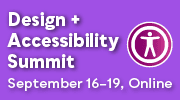When I decided to write a column on recent use and discussion of QR codes, I knew I wanted to follow it with a piece about fresher technology that is used with similar intent. Beacon technology was the first thing that came to mind.
I thought of beacons in part because several people I had worked with at SwapDrive, a DC-based startup that provided online backup and file-sharing technology, were founders and employees at Radius Networks, a provider of beacon technology. I reached out to a Radius Networks engineer I knew from the SwapDrive diaspora and he connected me with his CTO, David Helms. David graciously granted me the following interview in which he introduces and describes beacon technology for the edification of our integrated marketing community.
This is technology you need to know about. After you read the interview, take a shot at one of the questions I asked: what opportunities do you see for print to be used in concert with beacons? Tweet me at @andysolages if you come up with something good.
![]()
Introduction to Beacon Technology: An Interview with David Helms, CTO of Radius Networks
Andy: You’re the CTO of Radius Networks. Can you tell us a little bit of what that entails?
David: My job is essentially to steward over the company’s technology vision and focus on the directions that the company should be going and what markets we should we be looking at, how we would apply our core technology, which is around proximity and proximity awareness, to the types of things that our customers are looking for.
Radius Networks is kind of in a unique position because we are not in any one particular vertical. We’ve got customers across things like sports venues and quick service restaurants and retailers and partnerships with media companies so there’s lots of different ways we can go with proximity technologies. So part of my job is just to help decide and point to a direction for our engineering and marketing and sales teams: to clarify where we should be going and where we should be.
Andy: For those who are wholly unfamiliar with beacon technology, could you tell our audience what the technology is, cover the basics, and provide some use cases?
David: Sure. A beacon is a very simple technology. It’s a small radio transmitter, generally implemented with what’s called Bluetooth low energy. In the industry, the signal sent out by a beacon is called an “advertising signal”, but it shouldn’t be confused with an ad like an ad that would show up on a webpage or something like that. It’s a repeated radio transmission that contains a unique identifier that represents that beacon as well as some additional information. The receiver of the beacon’s signal is generally a mobile phone. When a person approaches a beacon with a mobile phone, and the right apps on their phone, their phone will be able to recognize that they are in the presence of a beacon because the phone will receive that radio signal. The mobile device will be able to identify which beacon it is so that the user will have some context: “I know I am here at this place or with this thing.” And they’re also able to tell approximately what their distance is from that beacon. So we use beacon technology to enable our customers, which include large retail brands, quick service restaurants, and sports venues, to present compelling experiences for their users on their mobile devices in the context of the users understanding that they are near a place or thing that is important to them. And the beacon is essentially a marker for that place or thing.
You might think of it as an analog to what everyone wanted to do with QR codes. We all fell in love with them (QR codes) but marketers didn’t realize that no one wanted to deal with the hassle of engaging with QR codes. With QR codes, the idea was that you would take one of these stickers, and put it on something, and the user would find it interesting, put their phone up to it, and then they would get relevant information that would drive an experience.
Think of beacons as sort of like QR codes that don’t require the user to do anything.
Andy: I love that you brought that up. My previous column was about QR codes and it seemed logical for this discussion of beacons to follow. There’s a through line.
David: Ha. Yes, beacons are like QR codes that don’t suck.
Andy: Ha. Alright. Well, how would RFID fit in this space?
David: RFID is a very important technology and we certainly look at it for certain things, but it’s not the bulk of what we do. RFID is similar in that it is a radio technology, but it does suffer a little bit from what QR codes suffer from which is that RFID requires users to know ahead of time that they want to engage with a thing and for the user to do something: like putting a phone against a sticker or a mark on the wall. The exciting thing about beacons using Bluetooth technology is that they can work at a distance. The user’s phone can receive a signal 50 meters or even 100 meters away. And depending upon how the phone and the applications writing on that phone interpret that signal, you can immediately get an experience driven to the user in the form of a notification or an in-app experience. Or the app on the phone could decide, “I know I’m near the beacon, but I’m going to wait to drive the experience until the user is approaches and is able to see the thing the beacon is marking in context.” So beacons are preferable to QR codes and RFID because 1) they don’t require the user to actively kickstart the experience and 2) they just have a huge amount of flexibility in terms of being able to drive an experience at a distance, or directly in-front of a thing you’ve marked with a beacon, or anything in-between.
Also, the beacons are nice because you not only know when a user comes in range of a beacon, but you know how long the user stayed within range. Because when they stop receiving the beacon’s signal then you can note that they have essentially exited the region of that beacon. So you know when someone showed up, how long they stayed, and when they left. And you know approximately how far they were from the beacon during the time they were in region.
Andy: A lot of people in our integrated marketing community/audience work for marketing agencies, large retail organizations, and as printers of point of purchase signage, direct mail, and other marketing materials. Are there any opportunities to use print in concert with beacons?
David: Interesting question. This is starting to change a bit, but one important aspect of beacons is that for the most part beacons are an opt-in technology. One of the real strengths of beacons is that they’ve been architected in a way that preserves users’ privacy. Obviously in this world of marketing we want to be sure we’re on the right side of that line. As tempting as it is to do all the wonderful things that we imagine we could do if we just knew where users were all the time and could track them, it is really important for the longevity of our business and for what we want to do as marketers or as experience designers is to make sure we’ve architected in such a way that users are in control of how much information they share. There’s an analogy I use: you can think of beacons like lighthouses. They repeatedly transmit information, but they never listen for information. Beacons aren’t collecting anything. A lot of people have the misconception that when someone puts a beacon out there that it’s listening for my phone and recording that my phone was there. And it’s just the opposite. If you think of beacons like lighthouses, mobile devices are analogous to ships. Ships will see a lighthouse and will react. It will have an experience; it will change its behavior because it sees that lighthouse. So ships know about lighthouses, but lighthouses don’t know anything about ships. And that’s how beacons work. Beacons don’t collect information, but just lets mobile devices know that they are near something and then the mobile devices can choose to react or not react and that control over whether anything happens with the user of that mobile device is all in the user’s hands.
![]()
Andy: That’s an important point given the security concerns I imagine some people could have.
David: If users find value in this, they will invite us to give them these experiences. It’s like the same thing we had with web cookies in the 90s. Everyone freaked out about cookies until people realized “Wow, the website can remember my user ID and facilitate experiences.” That will eventually be there with beacons. It’s already there, frankly.
Traditional beacons support the signaling formats of the major mobile operating systems: for Apple that’s their iBeacon format and for Android by Google that’s their Eddystone format. In general, users have to have downloaded an app from the entity (e.g. restaurant, retailer, sports franchise, school) that has been designed to recognize the signals from that beacon. And then, after they install it on their phone, the user opts-in to participate and allow the app to respond to those beacon signals. Modern operating systems allow users to opt-in to share their location information and to interact with beacons or ignore beacons which is where we want to be for the long term health of this business. So there is a very important aspect here where print marketing, coordinated with other marketing efforts, can bootstrap that relationship to encourage users to download the app and explain to them what benefits they would receive from the proximity driven experiences using beacons. And to help build that relationship.
Building relationships is one of the things that beacons really do for a lot of our clients that have venues where they want to use is beacons. Yes, you can think of beacons as assisting with simplistic and not very creative marketing: “oh, let’s push an offer in front of a customer. Let’s give them a coupon or a discount” but really beacons shine when you provide a beneficial experience to users when they come to your venue. So for example, quick service restaurants, some of our customers there, when you walk into one of their restaurants you can get a notification on your phone reminding you that you can order your food on their app rather than standing in a crowded line in front of the cash register. So you order your food on your app and take a seat at a table and someone will bring your food to you. That’s not necessarily marketing a discount or trying to drive incremental sales, but what it is doing is making that sales process, or that customer experience, more preferable. So that they say “hey, these guys really put effort into making sure I have a good experience with them” and it’s building that relationship and that stickiness with that customer and that brand.
Andy: I remember reading that Radius Networks has been working with Google Nearby Technology.
David: Yes. Fortunately, we have a great relationship with all of the mobile technology providers. We work with Apple’s iBeacon technology. And we also work with Google and helped them fashion their Eddystone family of beacon technologies and worked with them to integrate it into some of their mobile operating system APIs. One of those is Nearby. The interesting thing about Nearby is that it doesn’t necessarily require the download of an app ahead of time. So what you can have is essentially an app-less experience. Google is being very careful about this where they are screening and will require entities to submit the experience that they wish to drive to users so that they can be approved and whitelisted. So you might walk into a sports stadium or maybe a mall environment and get a notification from the Android operating system that would let you know about an app you can download that would give you all of these benefits if you’re in this particular stadium or this particular mall. So if you’ve ever wanted to have a mall map on your phone, but you didn’t have the app that has that mall map, this is a great way to let you know as you walk in the mall that there’s an app with a map, discounts, and all sorts of interesting stuff you can do on your phone. Along with other things; it doesn’t have to be about downloading an app. It could be other beneficial information. For example, we work with Notre Dame who are using Nearby technology to provide a mobile campus tour. So as you move around the campus you get a notification on your phone, even if you don’t have an app, that if you clicked on it, it would bring up your browser and take you to a webpage that would have all of the information about maybe a particular library building or this particular statue on campus, or a cathedral. And so you’re having this interactive experience even without having to have an app installed using the Nearby technology. And that’s expanding the reach of beacons beyond in-app experiences. Which is pretty exciting stuff.
Andy: Absolutely. I think the example I saw was about printing photos.
David: Yes, that was with CVS. You walk in and a notification offers a photo kiosk experience and facilitates that with information about how you could connect to their web-driven application. And we’re also doing this with United Airlines where you’re notified of their app for providing flight status and in-flight entertainment options. There are number of interesting areas to explore. And you notice with all of them they aren’t necessarily hard sell things, but are driving experiences so users have a stronger relationship with that brand.
Andy: Let’s talk about the future a little bit. Where is beacon technology going and what should marketers have on their radar for 2017 and beyond?
David: Beacon technology is going in a couple interesting directions. We’ve been treating beacon technology as sort of a bolt-on like in the QR code analogy. But what I think we’re going to see is, as we have more Internet-of-Things (IoT) technology around us, beacons are really going to be a feature of Internet-of-Things experiences. So for marketers, in general, one of the areas we’re really driving into is the out-of-home display market. This is where you have dynamic displays driven by content management systems that have integrated into them beaconing capability leveraging Bluetooth capabilities of either the small computer that’s driving that display or perhaps being built into an onboard computer itself. And then coordinating as the content of that display changes and changing the signal so that beacons can represent proximity information that is coordinated with what is displayed on that screen. We’re really starting to drive coordination of the display experience with the mobile phone experience so that there is a call to action on that display that can be taken up by the user on their mobile device immediately because that mobile device knows that they are in front of that display with that particular content being displayed at a particular time. So that’s really interesting as we tie these different screen experiences together with point-in-time, point-in-place, and point-in-context that makes it all make sense.
Also, one of the things I’m really interested in is how we move beyond the physical display and into augmented reality. You see how crazy Pokémon Go has got. And that leverages geo-coordinates. Anywhere you set down beacon technology you can drive an architected experience; you can deploy augmented reality experiences without needing to have a massive database. As long as you have a mobile device that knows it is near this thing you can tie the physical world to what that user is experiencing on their mobile device screen. So I think you’re going to see beacons show up in a big way in augmented reality.

Andy: What’s the best way for people to learn more about what you do and how you can help them?
David: Well, they can certainly come to our website (radiusnetworks.com) and visit our blog. We talk about our experiences working with some of our major customers like Notre Dame and United and major NFL teams and MLB teams. We share experiences our customers have had. And we’ve also tried to provide support at the programming level. It’s one thing for the marketing person to say “this is magical. let’s get this done” but a lot of what we publish on our blog and on our website is geared towards that engineering group, the people that are writing the mobile apps, the IT people who deploy all these things, and how they can do that successfully. We have a lot of open source projects available on GitHub. We have a lot of developers that use our SDKs and our backend cloud services that you can use to help drive these experiences and provide a platform on top of just the beacons to actually manage the overall solution. All of that information is available on our website and we’re always available to consult with customers as well.
 Andy Solages connects people and organizations with technologies to improve professional experiences and business results. Andy is a monthly contributor to Print Media Centr’s News from The Printerverse and a regular participant in #PrintChat on Twitter.
Andy Solages connects people and organizations with technologies to improve professional experiences and business results. Andy is a monthly contributor to Print Media Centr’s News from The Printerverse and a regular participant in #PrintChat on Twitter.
Treat yourself to more Andy: Twitter | LinkedIn | andysolages.com












4 Responses
Wow, never thought of comparing Beacons to QR codes. Well, technically they do have one feature in common: both engage the user to start virtual interaction with your product.
I read a research that compared iBeacons to GPS. It said these two have overlap in functions and that’s the reason why so many businesses fail to make the most out of it. I believe all technologies have their cases of use, it’s just important to see what works best for your niche. For example, Beacons are great for hospitality, tourism and medical industries (not to mention the most obvious retail marketing).